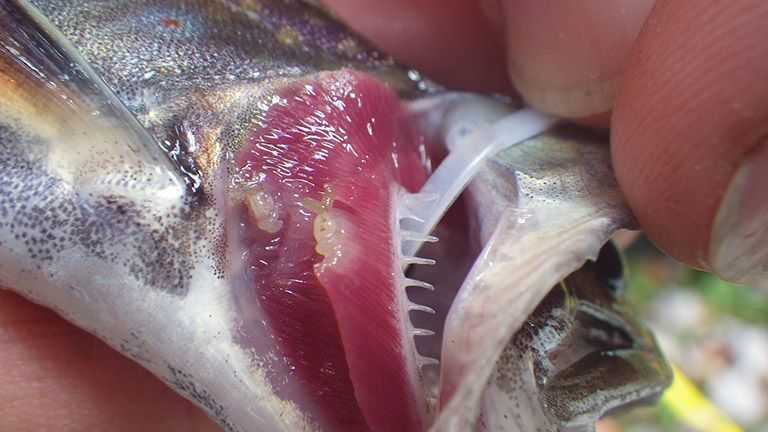Gill Lice Found On North Carolina Trout
Fisheries biologists with the North Carolina Wildlife Resources Commission are asking for anglers’ assistance after reports of gill lice on trout in western North Carolina trout streams were confirmed.
These new reports of gill lice came on the heels of the recent confirmation of whirling disease in rainbow trout collected from the Watauga River. This is the second time gill lice have been found in trout in North Carolina waters.
Gill lice were first discovered on brook trout on the Cullasaja River watershed in Macon County. They were also recently found on fish from the West Fork Pigeon River in Haywood County and Boone Fork Creek and the Watauga River in Watauga County.
Gill lice—tiny, white crustaceans also known as copepods—attach to a fish’s gill, which can damage gills and inhibit the fish’s ability to breathe. While most fish are able to tolerate a moderate infestation of gill lice, some fish, particularly those that are suffering from other stressors like drought or high water temperatures, can succumb to a gill lice infestation. Impacts to local trout populations can be devastating.
Biologists ask that anglers fishing for trout in any waters in western North Carolina be especially diligent when cleaning their fishing equipment and offer these recommendations:
• Remove any visible mud, plants, fish or animals before transporting equipment.
• Eliminate water from equipment before transporting.
• Clean and dry anything that comes into contact with water.
[easy-social-share]
